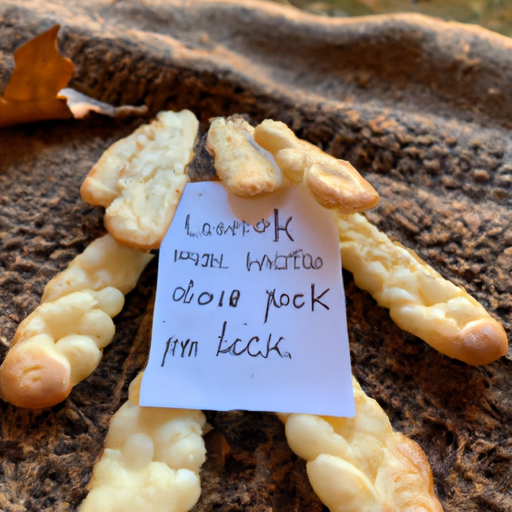How Rage Affects Intuition and How Happiness Can Assist in Clarifying the Way
 For many years, I bore a burden I couldn’t quite comprehend. It wasn’t physical and hard to label. It resembled a turbulent storm hidden inside, a simmering rage that quietly lingered within me.
For many years, I bore a burden I couldn’t quite comprehend. It wasn’t physical and hard to label. It resembled a turbulent storm hidden inside, a simmering rage that quietly lingered within me.
I believed I had perfected the skill of suppressing it. I could smile, remain reasonable, and even provide calm advice to others.
But beneath the surface, I sensed its quiet tug, similar to a threatening undertow. It distorted my intuitive flow, muted the inner voice I once trusted, and dulled the vibrant hues of the enchanting world around me.
I gradually recognized that anger is not always evident or forceful. At times, it is subtle and creeping, like a dense fog that creeps in unnoticed.
It numbs the senses. It tightens the heart. And perhaps most disturbingly, it obstructs the connection between you and your inner wisdom. The kind of wisdom that requires no explanation, just a tranquil space to rise and express itself.
For the longest time, I sought inner clarity. I practiced meditation, kept a journal, drew tarot cards, and sat in silence, yearning for a breakthrough.
Yet the revelations felt hazy, the messages unclear. It was as though someone had lowered the volume on my inner voice, and I couldn’t decipher how to raise it again.
<pThen, quite unexpectedly, everything changed. I was enjoying a laugh with a friend. Nothing profound, just a genuine, hearty laugh that surged from deep within. The sun warmed my face, and a favorite song began to play in the background. In that fleeting moment, I allowed myself to be entirely present. I wasn’t trying to heal or fix anything. I wasn’t searching. I was simply joyful.
“Joy serves as a remedy for fear. For anger. For monotony. For grief.” “However, you can’t simply choose to feel joy.” “True. But you can opt to engage in joyful activities ~ Katherine Center
And just like that, the fog began to disperse. The toxic anger that had felt intensely rooted seemed to suddenly vanish. It didn’t necessitate a dramatic awakening, months of intense inner work, or a profound self-discovery. It was instantly neutralized in the presence of joy. The type of joy that emerges when we are present enough to accept it.
That moment unlocked something within me. It felt as if the oppressive storm within my spirit dissipated, and a burst of brilliant insight pierced through. My intuition had never abandoned me. It had always been there, patiently waiting just beyond the veil I had unknowingly draped over it.
The veil, as it turned out, was not woven from doubt or fear. It was crafted from old wounds, unprocessed anger, hidden narratives, unresolved moments, and lingering resentments. The happiness I permitted myself to experience acted like a golden key. It didn’t force the door open; it delicately unlocked it, as if touched by a magic wand.
Suddenly, I could feel everything again: the subtle nudges, the quiet understanding, the synchronicities, the guidance, and inspiration I had been missing.
Since that moment, I no longer view anger as my enemy. When it arises now, I refrain from suppressing it or wishing it away. Instead, I become inquisitive. What is it signaling? Where am I holding onto something that seeks release? It isn’t always comfortable, but I no longer dread it. I trust that it has lessons to impart, and I also trust that I need not remain within it.
Here’s what I’ve discovered: Joy is not a luxury. It is not trivial or naive. Joy is a powerful remedy. It’s the cleansing rainfall that lifts the haze. It’s the sunshine that warms our hearts, allowing us to hear the messages that have awaited our attention.
“When you discern the roots of anger in yourself and in others, your mind will relish true peace, joy, and lightness. You become the healer of yourself and others ~ Thich Nhat Hanh
Joy does not divert us from our spiritual journey; it deepens it. When I embrace moments of genuine lightness, whether it be through laughter, dancing, communion with nature, or simply granting myself the grace of rest, my intuition resonates louder, clearer, and with greater confidence. I feel connected once more, not only to the divine spirit but also to my true self.
Perhaps this is the true secret. We need not struggle our way back to clarity. We need not earn our inner wisdom. We do not have to plead for signs from the universe. We merely need to soften our hearts enough to perceive it.
So, if you find yourself feeling disconnected, as if your inner compass is spinning aimlessly, consider this. Do not sit in the depths of sadness, self-pity, or resentment. Seek out your joy! Allow yourself to laugh, play, and explore. Embrace feeling good, even if it seems unearned or strange. That lightness is not a distraction. It is an invitation. It is the portal your soul has long awaited you to enter.
Your intuition is still there. It always has been. And it resonates most clearly when your heart is light enough to listen.
|
Priscila’s intriguing intuitive path serves as a testament that embracing one’s true purpose often demands courage and resilience, but the rewards are boundless. This bilingual, former college professor turned professional psychic reader is a naturally gifted psychic, an empath, a twin flame, an intuitive medium, a career coach, and a channeler, originally from Costa Rica. By bravely stepping away from her academic career, Priscila embraced the spiritual gifts that were both her calling and her passion, embarking on an entirely new chapter of life that neither she nor her devoted clients would ever regret. Now residing in New England, with an expanding online presence, Priscila offers psychic guidance and channeled messages from otherworldly sources that are clear, concise, and as life-changing as she is! It’s no surprise that Priscila is regarded as an incredibly accurate reader, with a steadily growing client base. Clients are provided with clear answers that alleviate burdens and align their souls. Her fulfillment from helping individuals navigate their challenges is immeasurable. If you’re looking for a safe, compassionate environment from which to begin your own courageous journey, you can find Priscila at PsychicAccess.com. |
Anger is a potent emotion that can significantly affect our capacity to connect with our intuition. When engulfed by anger, our minds can become muddled, and our ability to think clearly and make sound decisions suffers. This can obstruct our ability to trust our instincts and make intuitive decisions.
One way anger influences our intuition is by causing us to become overly fixated on the source of our anger. In moments of anger, our thoughts turn towards the person or situation that has provoked our feelings, rather than staying anchored in the present and attuned to the signals that our intuition may be sending. This can hinder our ability to access our inner guidance and make choices aligned with our true selves.
Moreover, anger can create a heightened reactive state, where we are prone to act impulsively without considering the repercussions of our actions. This can further cloud our intuition and lead us down paths that might not serve our best interests.
Conversely, joy can exert a transformative influence on our capacity to access intuition and arrive at insightful decisions. When we are enveloped in joy, our minds become clearer, and our energy shifts positively, facilitating a smoother connection with our inner wisdom and fostering trust in the guidance it offers.
Joy serves to clear the way to our intuition by helping us release any negative emotions that may obstruct our ability to tune into our inner guidance. In joyful states, we become more open and responsive to the messages our intuition conveys, making it easier to make decisions that resonate with our authentic selves.
Additionally, joy can elevate our vibration and magnetize more positive experiences into our lives. In joy, we are more inclined to draw in opportunities and people that align with our highest good, thereby enabling us to advance along our paths with clarity and purpose.
In summary, while anger can detrimentally influence our ability to harness our intuition, joy can facilitate clarity and empower us to make intuitive decisions that resonate with our true selves. By nurturing a sense of joy in our lives and liberating ourselves from the binds of anger, we can tap into our intuition and trust in the guidance it provides. Continue reading











